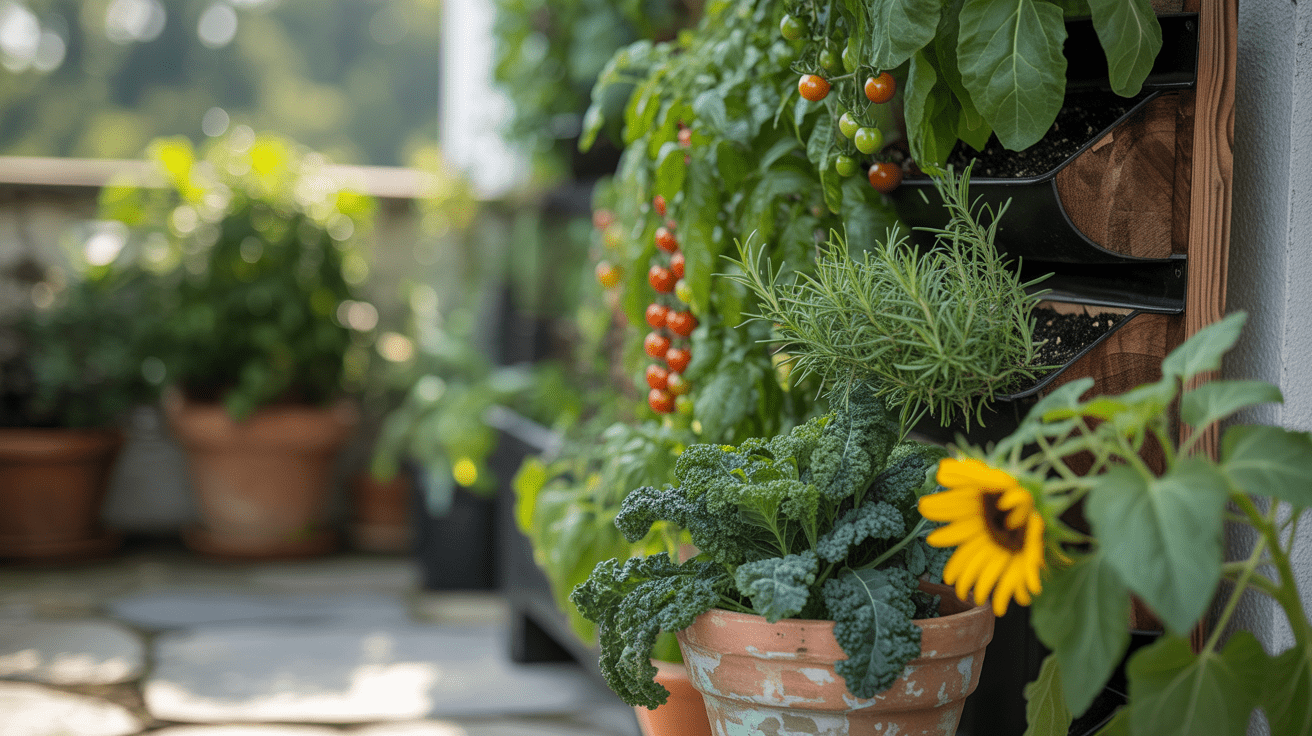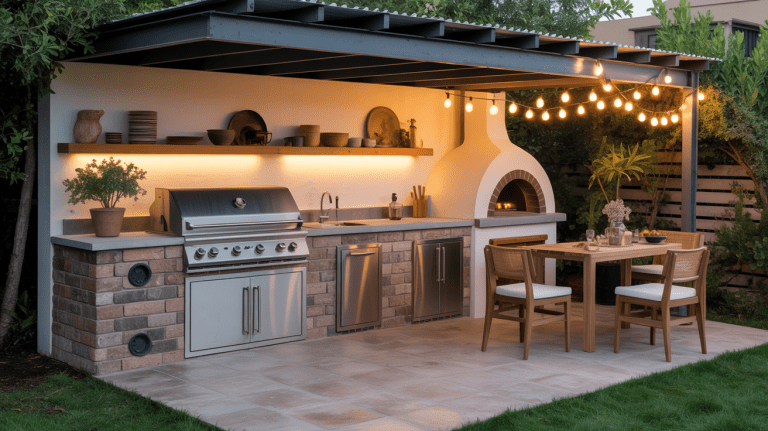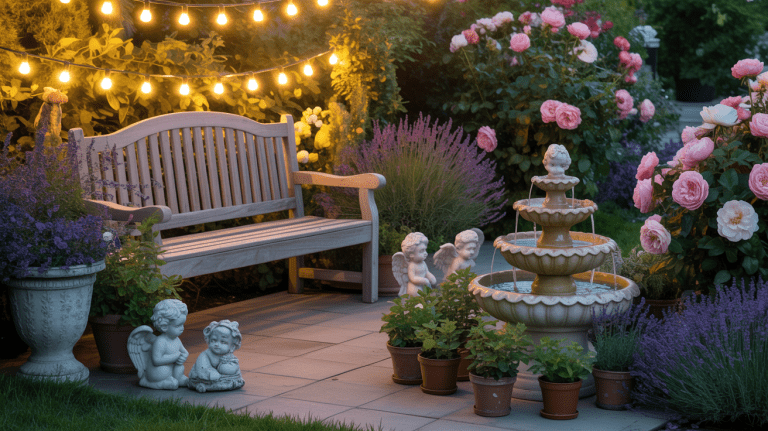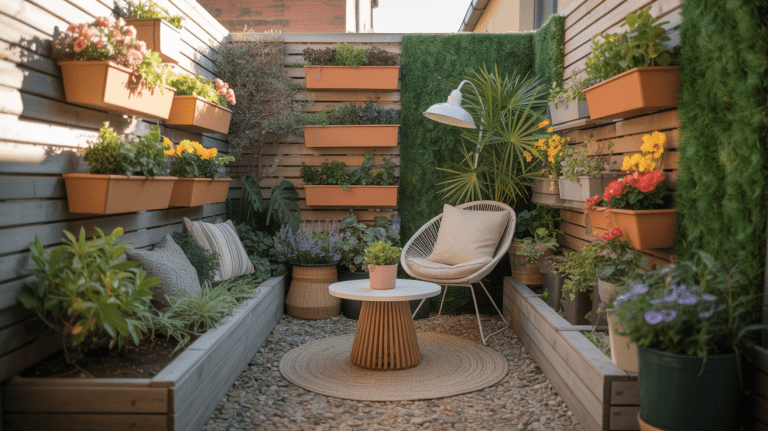12 Best Vegetables for Vertical Garden to Maximize Space and Yield
Vertical gardening is a practical way to grow more food in smaller spaces. It uses structures like trellises or cages to help plants grow upward instead of spreading out. This method makes gardening accessible for people with limited yard space or those who want to organize their garden efficiently.
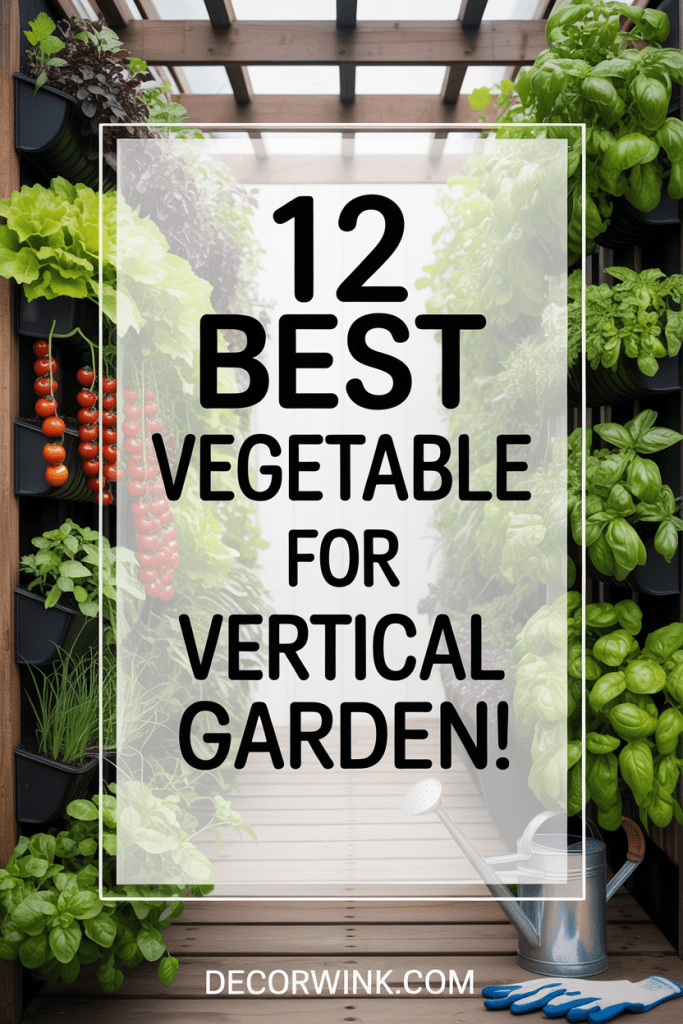
The 12 best vegetables for a vertical garden are chosen for their ability to climb or grow well in tight spaces, making them ideal for maximizing yield in a small area. These vegetables also offer easy harvesting and can fit neatly into vertical setups, which benefit both beginner and experienced gardeners.
Peas
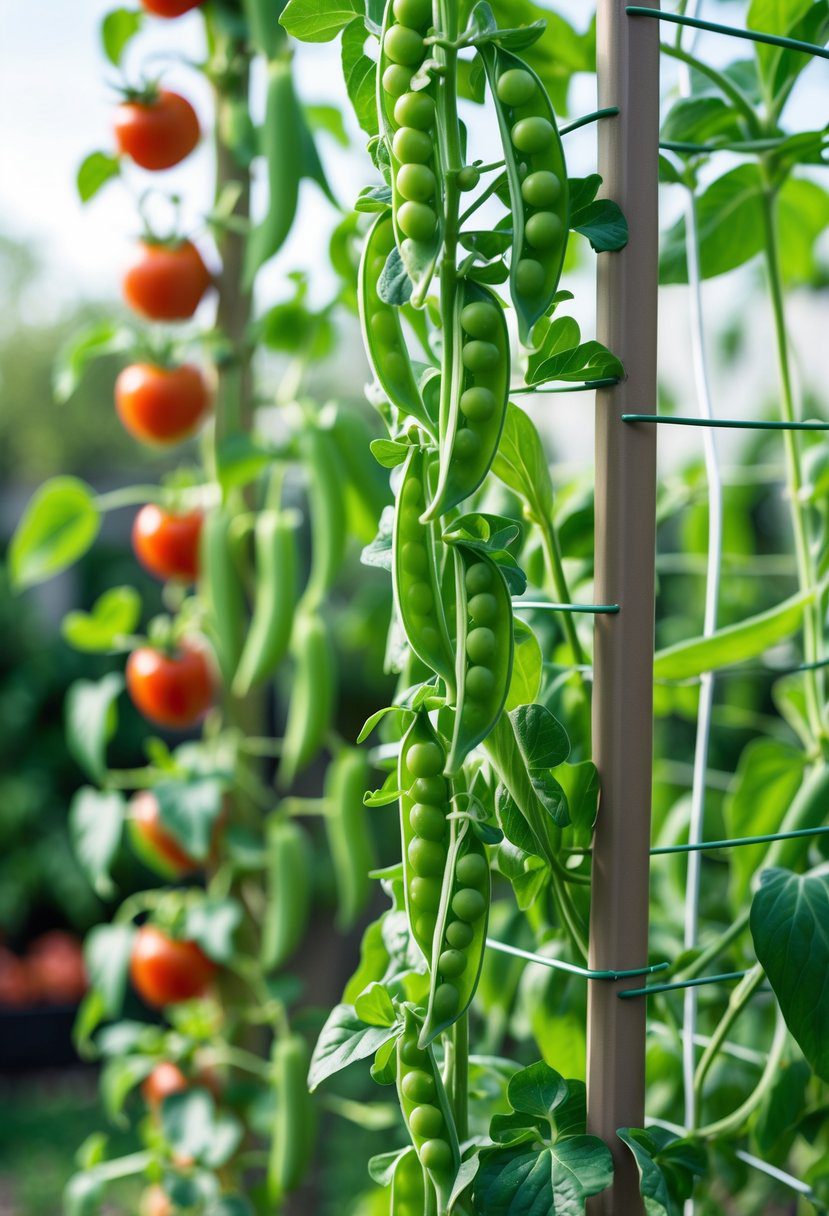
Peas grow well in vertical gardens because they naturally climb. They need a support like a trellis or fence to grow upwards.
They thrive in cool weather and produce sweet, edible pods. Peas grow quickly and do not require much attention once established.
Growing peas vertically saves space and makes harvesting easier. More details about growing peas vertically can be found at 12 Perfect Vegetables That Thrive In Vertical Gardens.
Pole beans
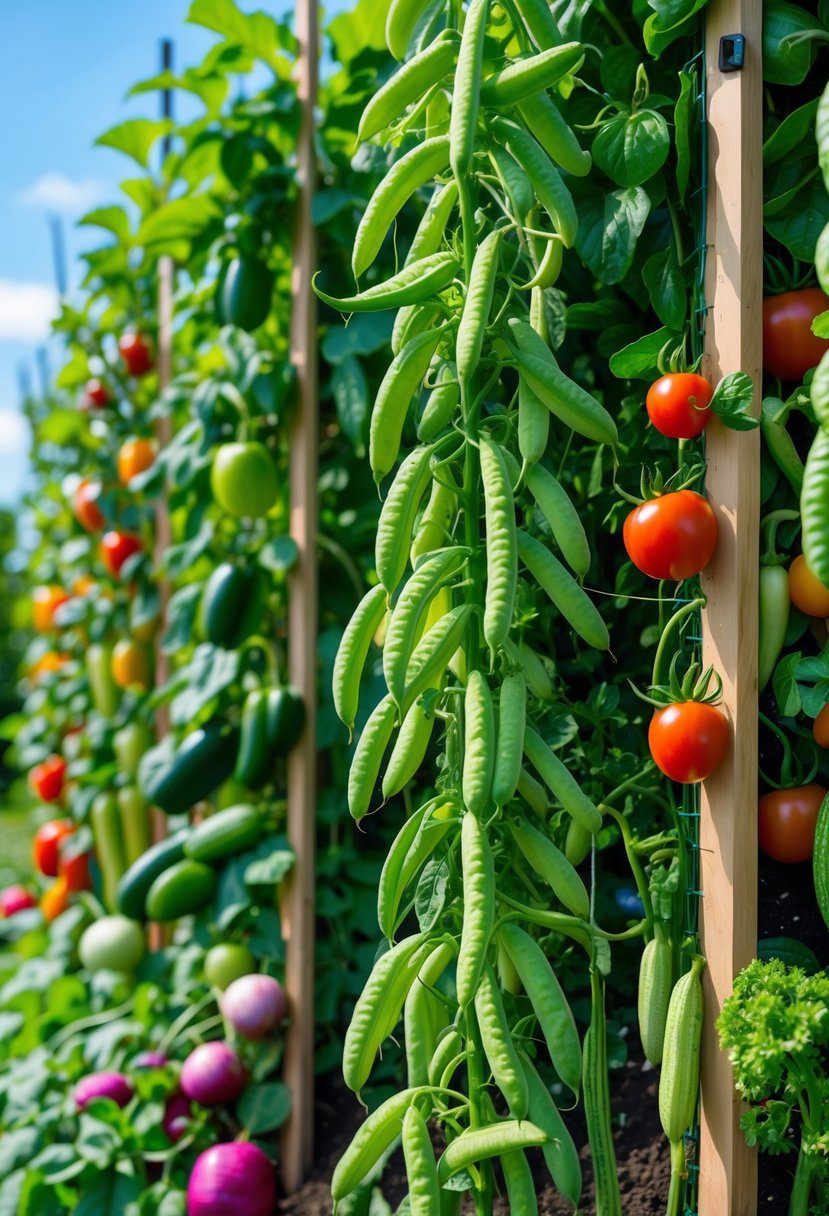
Pole beans grow tall and need support like a trellis or poles. They produce many slender pods, which are good for fresh eating. These beans work well in small gardens because they grow upward, saving space. They often yield beans steadily throughout the season. Growing pole beans vertically improves air flow and makes harvesting easier. For more details on growing pole beans vertically, see this guide on 12 perfect vegetables that thrive in vertical gardens.
Cucumbers
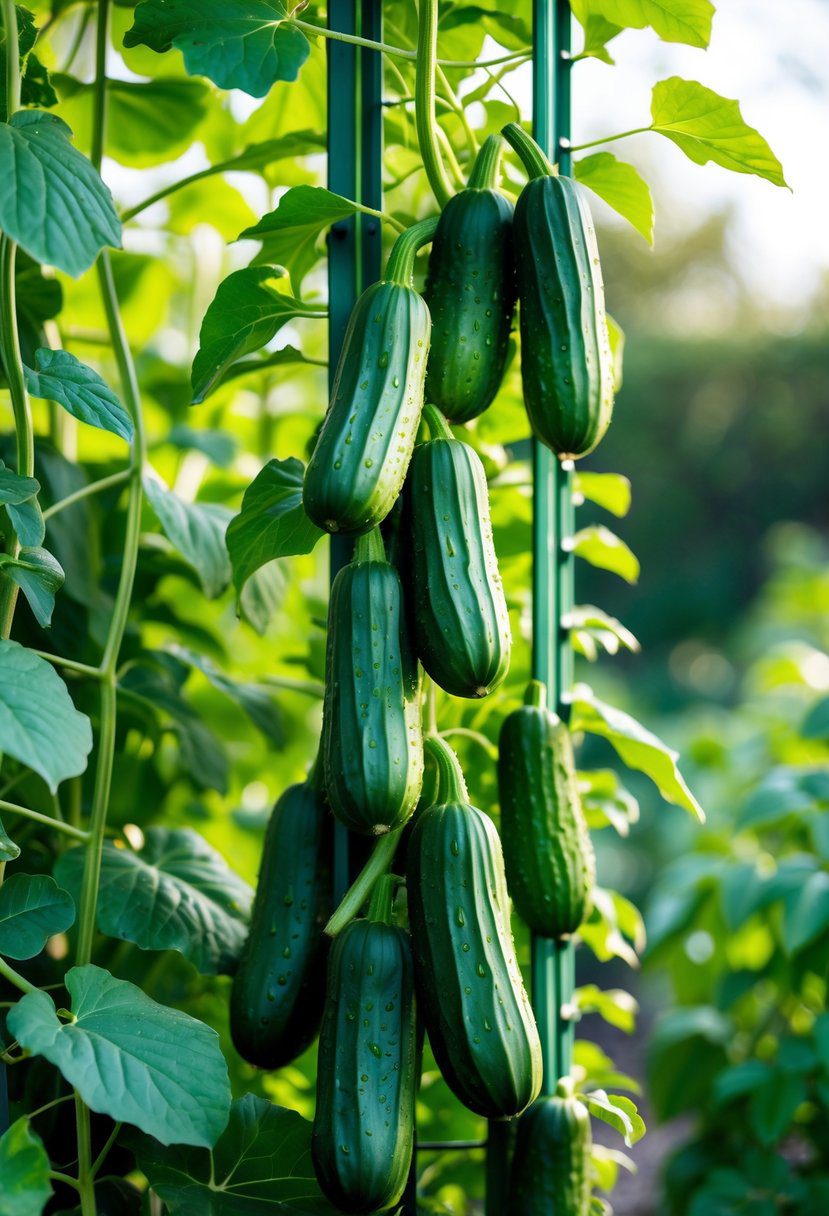
Cucumbers grow well on vertical structures because their vines climb easily. They need warm weather and plenty of sunlight to thrive. Growing cucumbers vertically saves space and helps improve air circulation, reducing disease risks. Varieties like Hybrid and Picklebush work well for this method. For more details, see 12 vegetables that thrive in vertical gardens.
Tomatoes
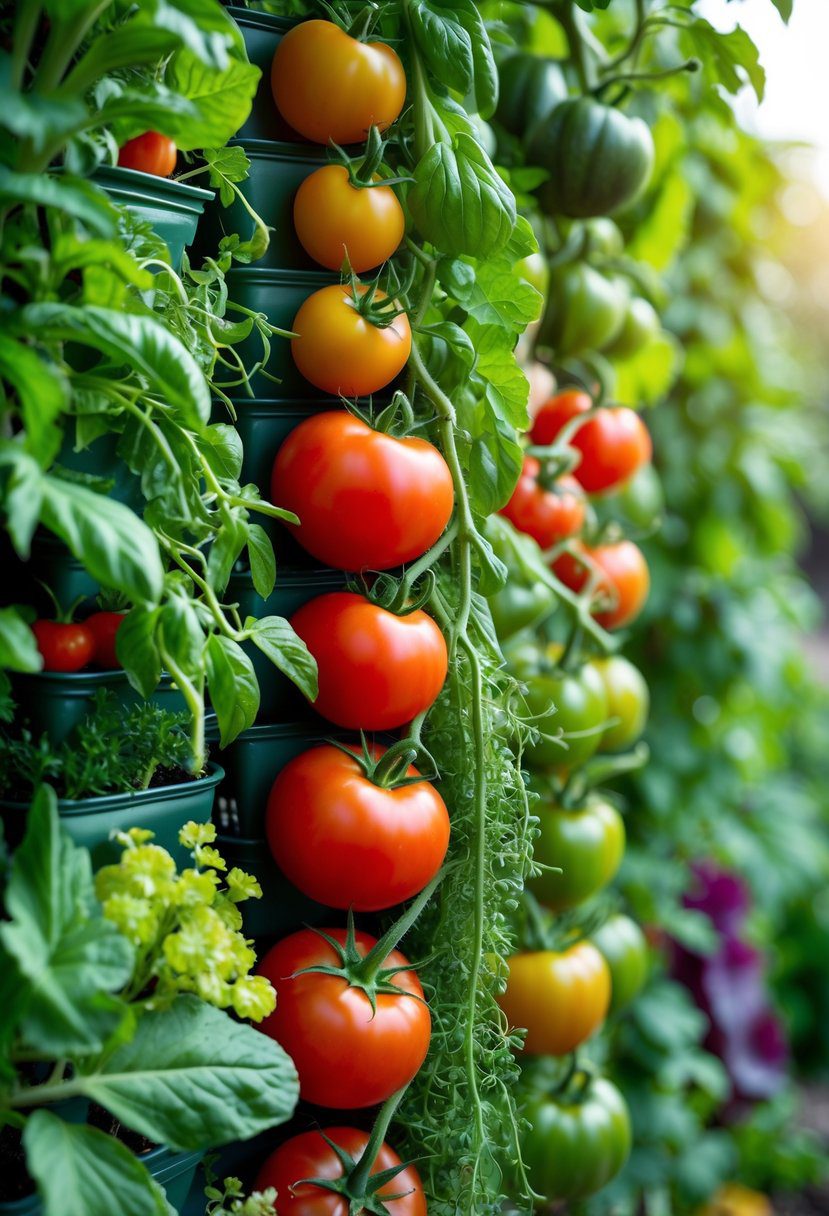
Tomatoes grow well in vertical gardens using trellises or cages for support. They save space and help improve air circulation, reducing disease risk. Cherry tomatoes are especially good for containers and vertical setups due to their small size and high yield. More details on vertical tomato growing can be found at 12 perfect vegetables that thrive in vertical gardens.
Bell peppers
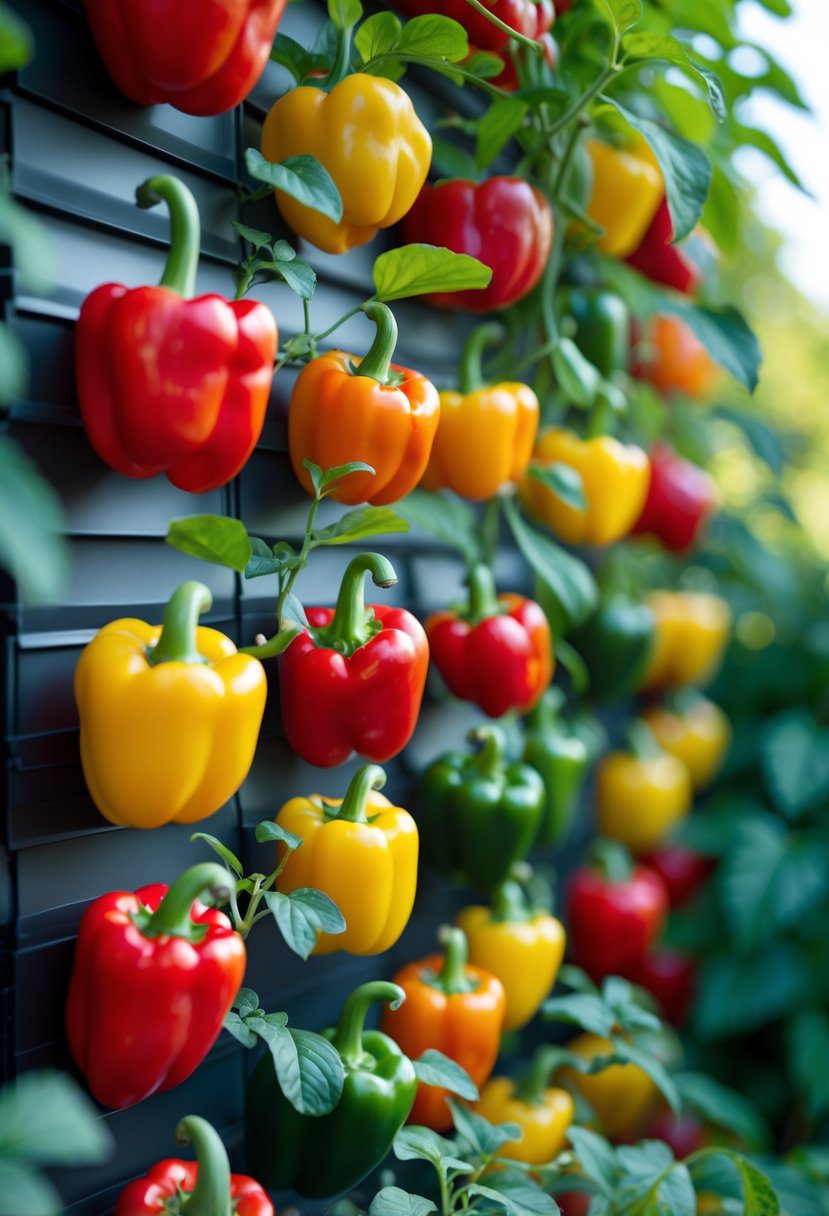
Bell peppers grow well in vertical gardens. They stay compact and use space efficiently.
They need support, like stakes or cages, to keep stems upright.
Bell peppers also benefit from plenty of sunlight and regular watering for the best harvest.
Learn more about growing peppers vertically in this detailed guide on how to grow peppers in vertical gardens.
Zucchini
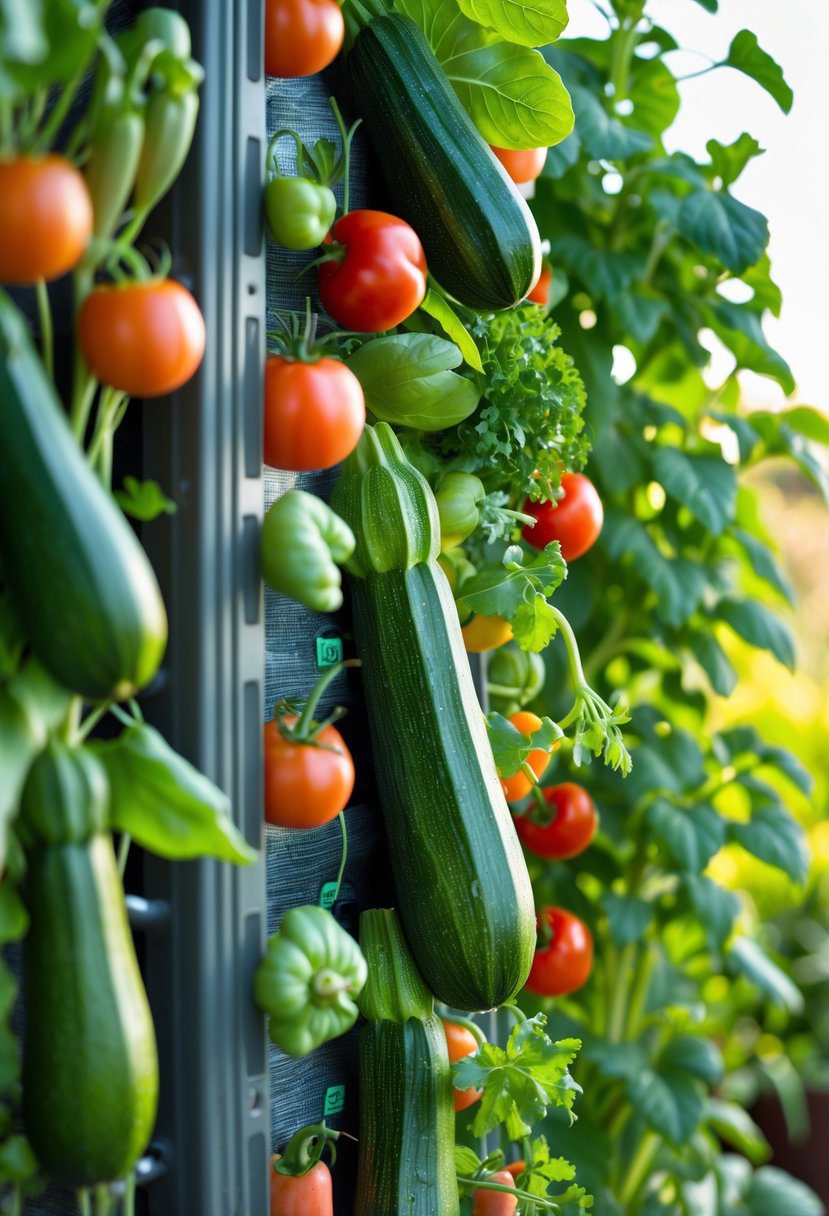
Zucchini grows well on vertical supports like trellises. This method saves space and improves airflow, reducing disease risk. It allows gardeners to grow more in smaller areas while keeping fruits cleaner and easier to harvest. For tips on vertical zucchini gardening, visit how to grow zucchini vertically.
Squash
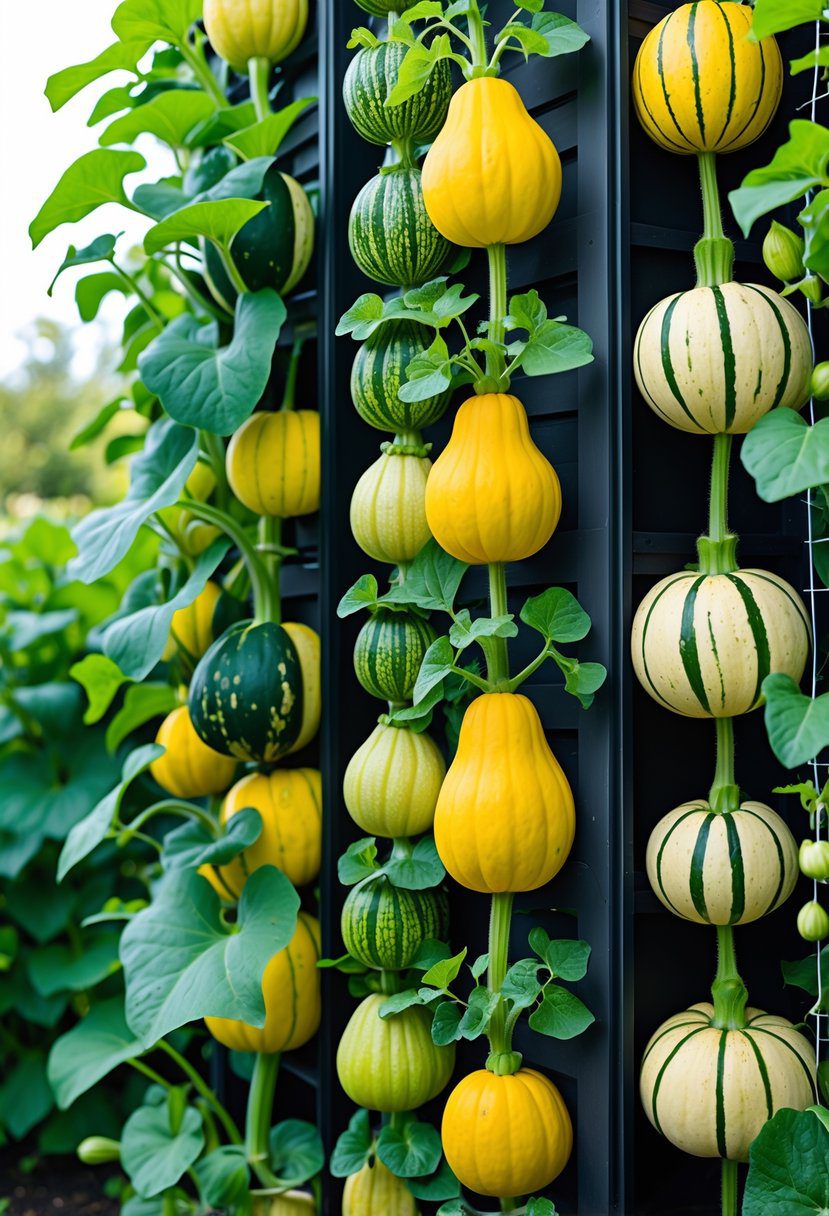
Squash grows well on trellises, saving space in small gardens. Smaller varieties like delicata and zucchini are best for vertical growth. Larger types, such as butternut, need extra support to avoid breaking. Growing squash vertically helps improve airflow and reduce pests. See more about growing squash vertically here.
Radishes
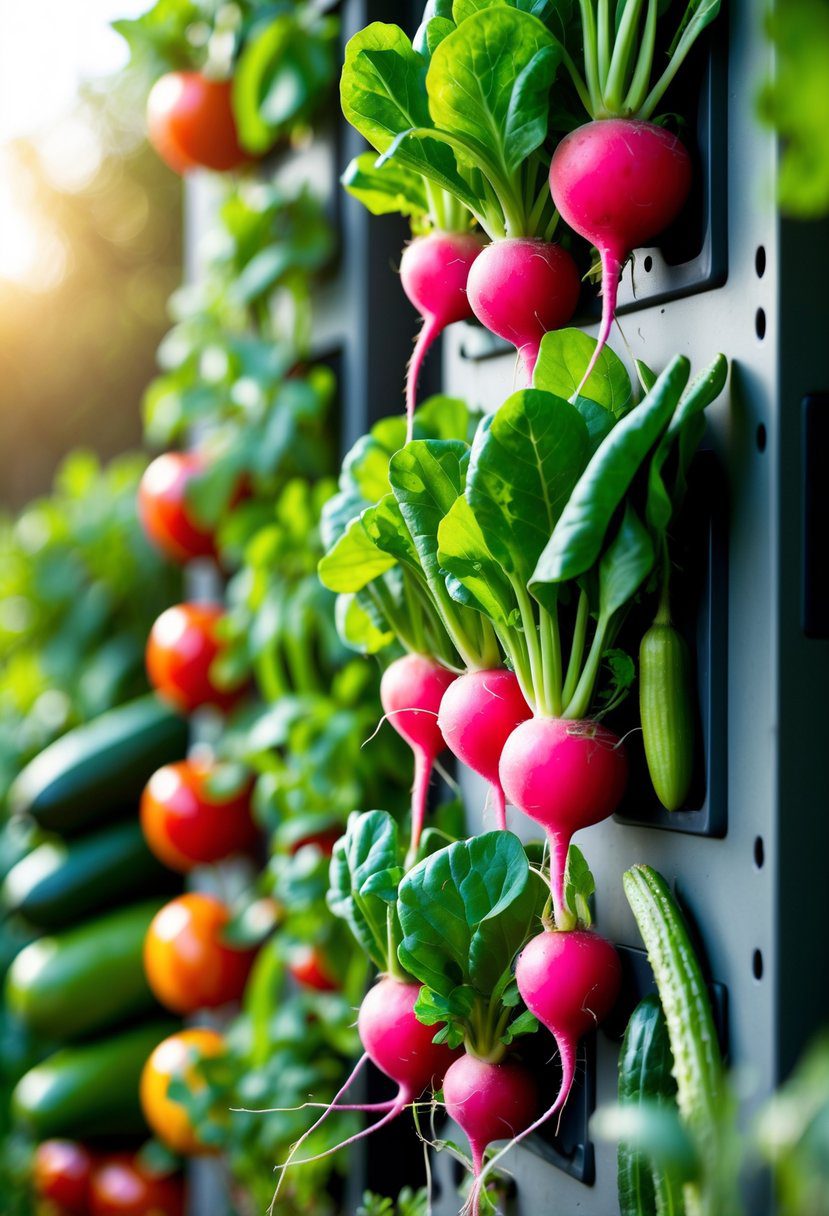
Radishes grow quickly and are well suited for vertical gardening. They can be planted in hanging baskets or vertical containers. Their small size makes them ideal for limited spaces while still providing a fresh, crunchy addition to meals. Growing radishes vertically helps save garden space efficiently.
Lettuce
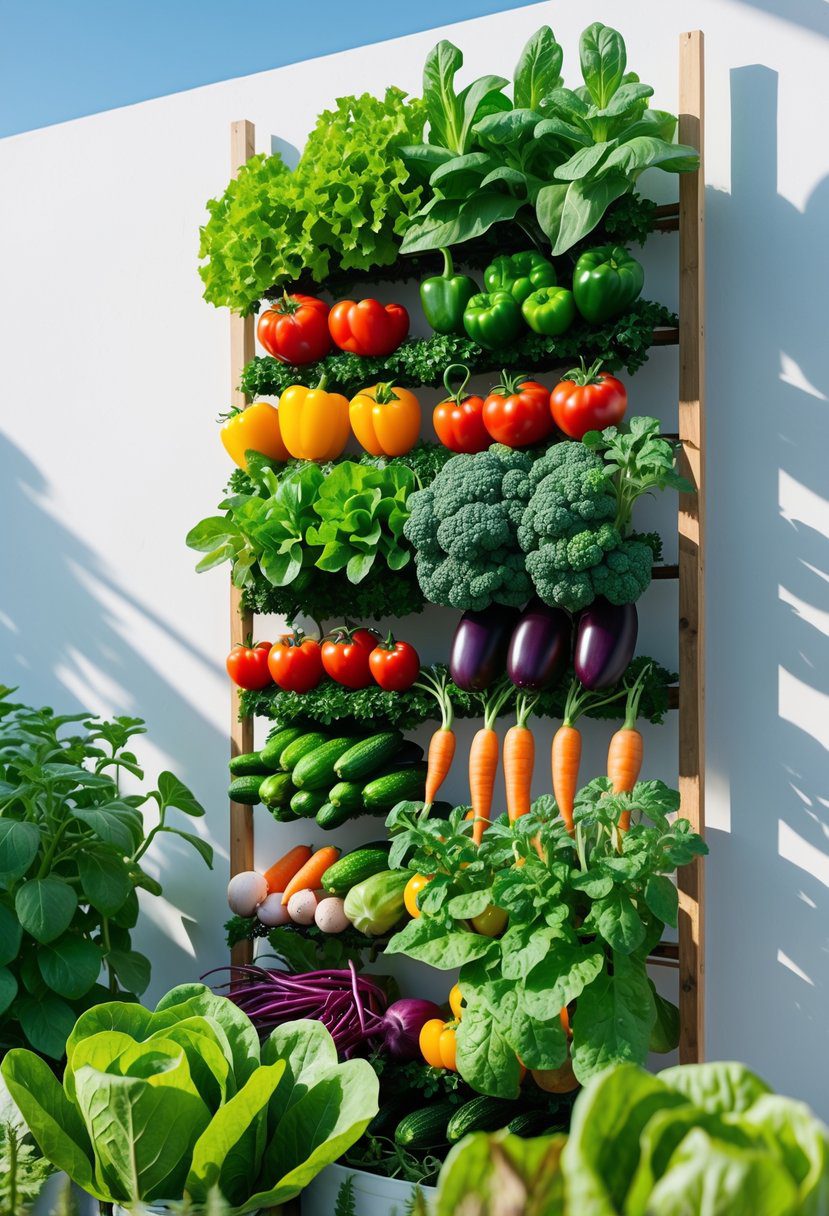
Lettuce grows well in vertical gardens because it is lightweight and fast-growing. It adapts easily to containers, making it perfect for small spaces. Lettuce stays non-invasive, so it won’t take over other plants in a vertical setup.
It can be grown in ladder planters or floating shelves for easy harvesting.
For more details, see this guide on 12 perfect vegetables that thrive in vertical gardens.
Spinach
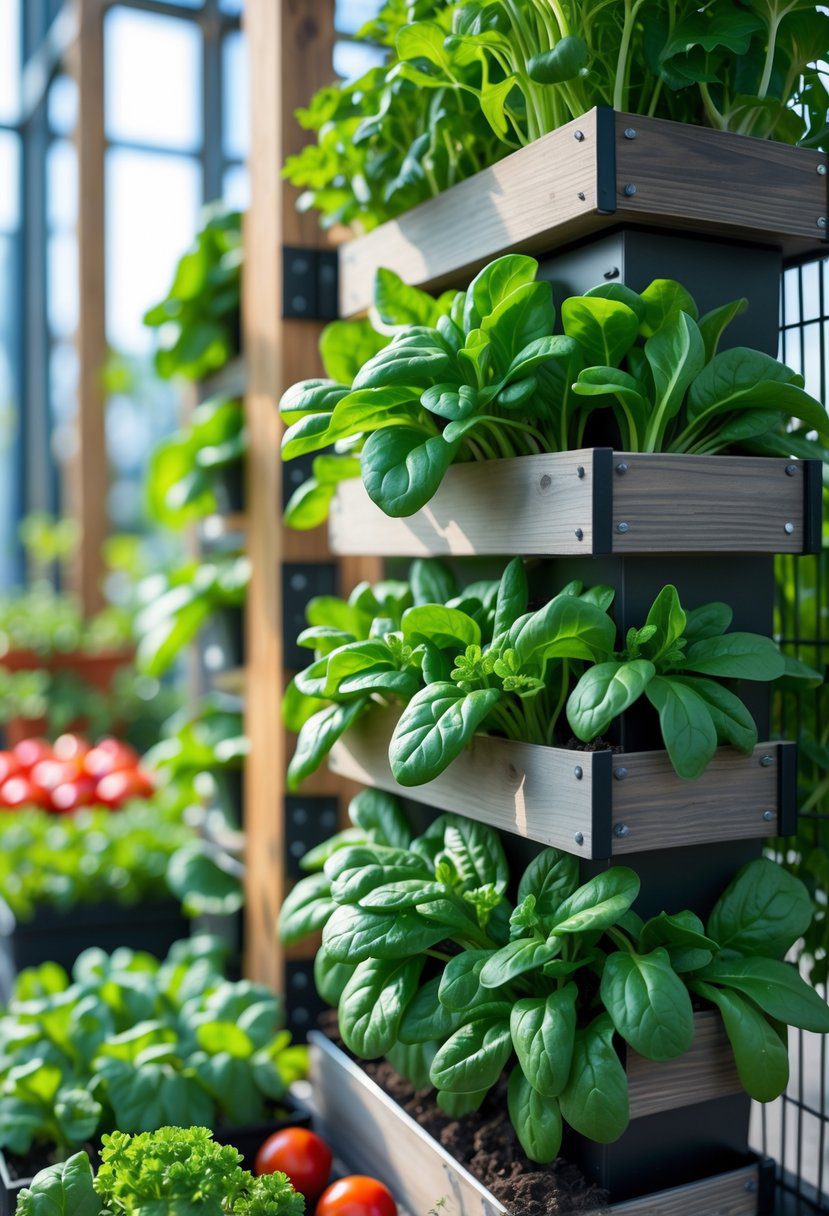
Spinach grows well in vertical gardens because it has tender leaves and a compact size. It prefers cooler weather and can be harvested quickly for fresh meals. Its leaves are rich in vitamins and iron, making it a healthy choice for small garden spaces. Growing spinach vertically saves space and allows easy picking.
12 Perfect Vegetables That Thrive In Vertical Gardens
Kale
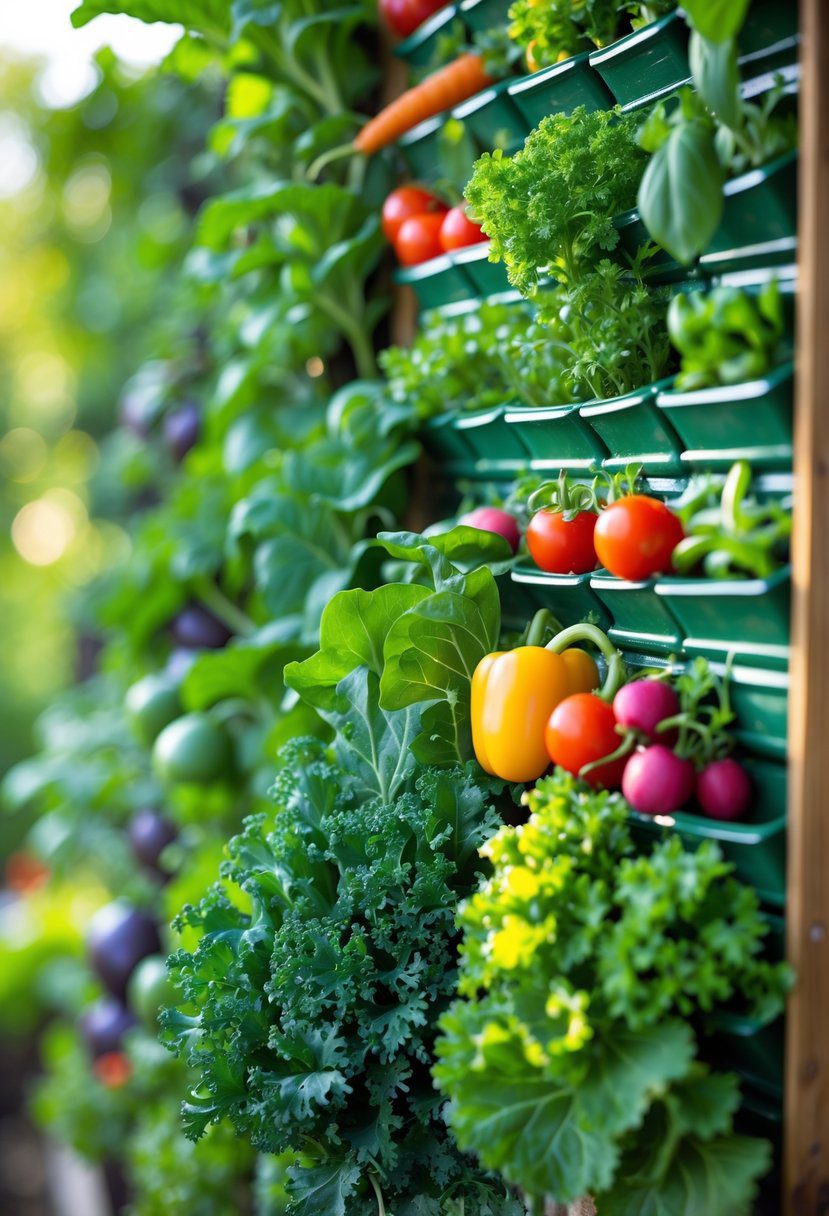
Kale is a hardy vegetable that grows well in vertical gardens. It thrives in containers or racks and needs little maintenance. Its sturdy leaves make it a good choice for cooler seasons and small garden spaces. For more details, see vegetables that work best for vertical gardening.
Swiss chard
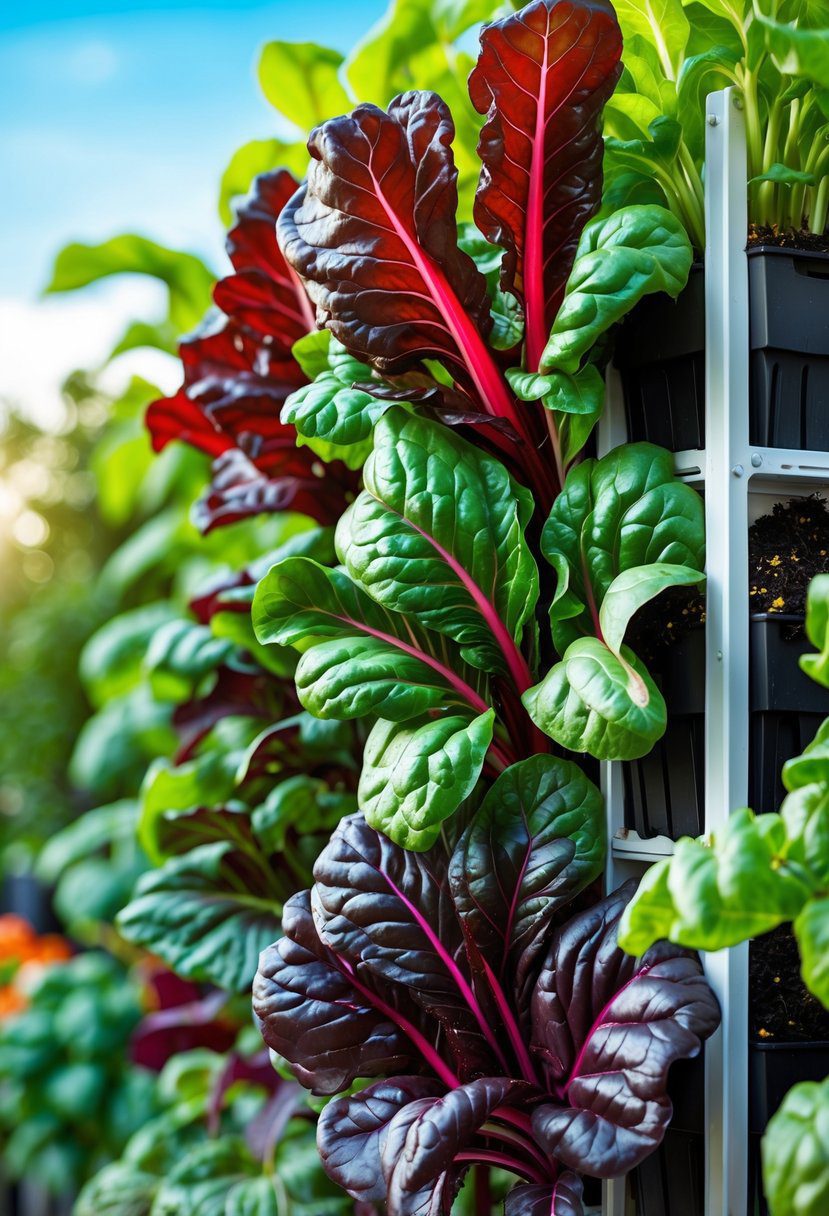
Swiss chard grows well in vertical gardens because of its compact shape. It needs nutrient-rich, well-drained soil and regular harvesting to keep producing fresh leaves. Its colorful stalks add both nutrition and visual interest, making it a practical choice for limited spaces. More details can be found at thegardenmagazine.com.
Frequently Asked Questions
Vertical gardening works best with vegetables that climb or grow upward naturally. Selecting the right plants and structures can help make the most of small spaces while supporting healthy growth and good harvests.
What are ideal vegetables to cultivate in a vertical gardening setup?
Vegetables like peas, pole beans, cucumbers, tomatoes, and bell peppers do well in vertical gardens. These plants either climb or benefit from support, making them perfect for growing upward.
Which climbing vegetables should I select for my vertical garden?
Peas, pole beans, and cucumbers are among the best climbing vegetables to grow vertically. They use tendrils or vines to attach to supports, which helps save space and improves air circulation.
How can I maximize yield in a small space with vertical vegetable gardening?
Using strong supports and training plants to climb helps increase yield. Regular pruning, consistent watering, and feeding also improve growth. Choosing compact or dwarf varieties can fit into tight spaces better.
What are effective vertical gardening systems for growing vegetables?
Trellises, cages, and vertical towers are common systems. Mesh netting or string supports allow plants like beans and peas to climb easily while providing stability for heavier vegetables like tomatoes.
Can you give examples of vertical vegetable garden structures for urban spaces?
Wall-mounted planters, hanging baskets, and stacked pots are popular in urban settings. These structures save floor space and allow growers to plant multiple vegetables like bell peppers and tomatoes in small areas.
What types of vegetables are suitable for trellis support in a vertical garden?
Climbing vegetables such as peas, pole beans, and cucumbers attach well to trellises. Tomatoes and bell peppers also benefit from cages or stakes to keep fruits off the ground and improve air flow.
For more details, see 12 Best Climbing Vegetables That Grow On Vines.

